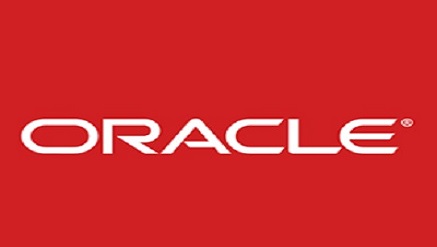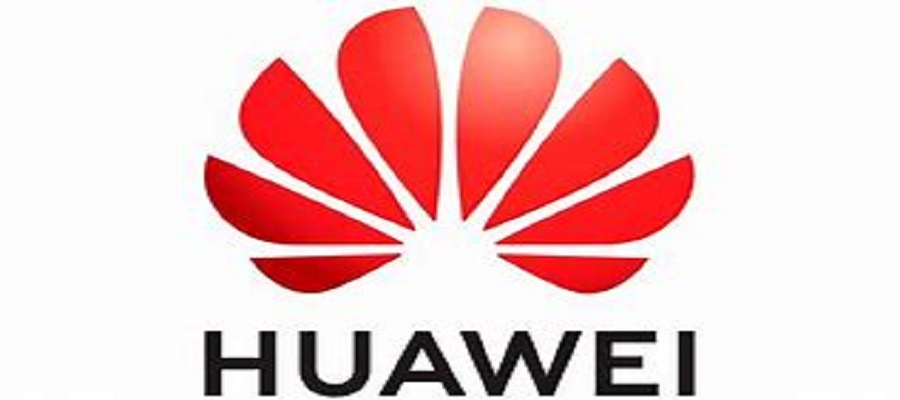E-Business
Oracle Records Cloud SaaS, PaaS Revenue Growth

Oracle Corporation on Thursday announced its fiscal 2016 Q2 results. Oracle said in the report that the strengthening of the U.S. dollar compared to foreign currencies had a significant impact on results in the quarter.
Total Revenues were $9.0 billion, down 6% in U.S. dollars and unchanged in constant currency.
Cloud plus On-Premise Software Revenues were $7.0 billion, down 4% in U.S. dollars and up 2% in constant currency.
Total Cloud Revenues were $649 million, up 26% in U.S. dollars and up 31% in constant currency. Cloud software as a service (SaaS) and platform as a service (PaaS) revenues were $484 million, up 34% in U.S. dollars and up 39% in constant currency.
Cloud infrastructure as a service (IaaS) revenues were $165 million, up 7% in U.S. dollars and up 11% in constant currency.
On-Premise Software Revenues were $6.4 billion, down 7% in U.S. dollars and unchanged in constant currency. Total Hardware Revenues were $1.1 billion, down 16% in U.S. dollars and down 10% in constant currency.
Total Services Revenues were $861 million, down 8% in U.S. dollars and unchanged in constant currency.
Operating Income was $3.0 billion and Operating Margin was 33%. Non-GAAP Operating Income was $3.7 billion and non-GAAP Operating Margin was 41%. Net Income was $2.2 billion while non-GAAP Net Income was $2.7 billion.
Earnings Per Share was $0.51, while non-GAAP Earnings Per Share was $0.63. Without the impact of the U.S. dollar strengthening compared to foreign currencies, Oracle’s reported GAAP Earnings Per Share would have been 5 cents higher and non-GAAP Earnings Per Share would have been 6 cents higher.
Short-term deferred revenues were $7.0 billion, up 3% in U.S. dollars and up 9% in constant currency compared with a year ago. Operating cash flow on a trailing twelve-month basis was $12.9 billion.
“We’re very pleased with our non-GAAP EPS of $0.63, beating the mid-point of guidance by 4 cents despite a stronger than expected currency headwind,” said Oracle CEO, Safra Catz. “We grew our SaaS and PaaS revenue 38% in constant dollars this past quarter, and we expect that revenue growth rate to accelerate to nearly 50% in Q3 and close to 60% in Q4. This rapid increase in our cloud revenue will help drive our SaaS and PaaS cloud gross margins from 43% in Q2 to approaching 60% in Q4 and drive significant EPS growth in Q4.”
“It was a very strong growth quarter for our cloud business, with SaaS and PaaS bookings up 75% in constant currency and billings up 68% in U.S. dollars,” said Oracle CEO, Mark Hurd. “We did 100 Fusion HCM deals and over 300 Fusion ERP deals in the quarter. We now have more than 1,500 ERP customers in the cloud – that’s at least ten times more ERP customers than Workday.”
“We are still on-target to sell and book more than $1.5 billion of new SaaS and PaaS business this fiscal year,” said Oracle Executive Chairman and CTO Larry Ellison. “That is considerably more SaaS and PaaS new business than any other cloud services provider including salesforce.com.”
The Board of Directors also declared a quarterly cash dividend of $0.15 per share of outstanding common stock. This dividend will be paid to stockholders of record as of the close of business on January 6, 2016, with a payment date of January 27, 2016.
E-Business
Attackers Target Employees with Fake HR Updates

Kaspersky has identified an advanced phishing campaign targeting employees with personalised emails and attached documents disguised as HR policy updates.

This campaign marks a significant escalation in phishing tactics, with attackers tailoring not only the email body, but also the attachments by addressing individual recipients, showcasing an unprecedented level of customisation. The goal was to lure the victim into entering their corporate email credentials.
The attackers likely prepared by parsing employee names to make the campaign targeted and more convincing.
The emails feature a deceptive body: a fraudulent “verified sender” badge to build trust, the recipient’s name, and an invitation to open the attached file to review remote work protocols, benefits administration and security standards. However, the whole email body is in reality just an image with no real text in it; this is done to bypass email filters.
The attached document, posing as an updated “Employee Handbook,” does not contain any actual guidelines – only a title page, a table of contents with the items that have supposedly been changed highlighted in red, a page with a QR code, supposedly for going to the full document and common instructions on how to read QR codes using a phone. The document features the victim’s name multiple times to convince that this document was created specifically for them.
If the victim scans the QR code and follows the link, they land on a fraudulent page where they are asked to enter their corporate credentials, which is what the attackers are hunting for.
“This campaign demonstrates a new level of sophistication in phishing attacks, and we may be seeing a new mailing automation mechanism that generates a separate attached document and a separate image for the email body for each recipient.
“This tactic allows to scale the attack and at the same time possibly evade traditional defenses. Organisations must prioritise advanced security measures and employee education to stay ahead of these threats,” comments Roman Dedenok, Anti-Spam Expert at Kaspersky.
E-Business
Temu Joins INTA to Combat Counterfeits and Elevate IP Standards Worldwide

Temu, the global online marketplace, has joined the International Trademark Association (INTA) as a corporate member and serves on its Anti-Counterfeiting Committee.

INTA is a global association that brings together more than 6,700 organizations, representing over 37,000 trademark professionals and brand owners across 181 countries. By joining INTA, Temu deepens its commitment to building a trusted online marketplace and advancing global IP protection through broader, cross-industry collaboration.
“INTA welcomes TEMU’s willingness to engage in anticounterfeiting initiatives, including in the Association’s annual Anticounterfeiting Workshop and Online Takedown Certificate Program which serve to share best practices and connect stakeholders,” said Alastair Gray, Director of Anti-Counterfeiting, INTA. “Constructive collaboration with these efforts can contribute to the protection of intellectual property rights for INTA members and support the removal of counterfeit products from the platform which ultimately protects consumers.”
At the 2025 INTA Annual Meeting held in San Diego in May, Temu participated in the Anti-Counterfeiting Committee Roundtable, serving as a moderator to facilitate discussions among brand owners, online platforms, and government officials on emerging technologies, best practices for collaboration, and strategies to strengthen global anti-counterfeiting efforts.
“Joining INTA and serving on its Anti-Counterfeiting Committee reflects Temu’s ongoing commitment to ensuring a trustworthy online shopping experience,” said a Temu spokesperson. “We value collaboration with industry peers and stakeholders and are dedicated to advancing collective efforts in intellectual property protection.”
Temu also participates in INTA-led online workshops, including the Online Platform Notice and Takedown Certification Program, which outlines the latest procedures and best practices used by e-commerce platforms and social media companies. These workshops aim to enhance the quality and accuracy of rights-holder notices, promoting more effective takedown processes and content moderation.
Since launching in 2022, Temu has made significant investments in IP enforcement. Its measures include comprehensive seller vetting and compliance training, 24/7 algorithmic monitoring with manual review, a dedicated IP protection portal and brand registry to streamline takedown submissions, and an internal enforcement team that handles claims with speed and accuracy.
E-Business
Huawei Unveils AI Computing System to Challenge Nvidia’s Flagship Product

China’s Huawei Technologies unveiled an AI computing system on Saturday that an industry expert said rivals Nvidia’s most advanced product, as the company aims to expand its footprint in the country’s booming AI sector.

The CloudMatrix 384 system made its public debut at the World Artificial Intelligence Conference (WAIC), a three-day event in Shanghai, attracting a large crowd to Huawei’s booth with its showcase of cutting-edge AI innovations.
The system has attracted significant interest from the global AI community since Huawei (HWT.UL) first introduced it in April. Industry analysts see it as a direct challenger to Nvidia’s GB200 NVL72, the most advanced system-level offering currently available from the U.S. chipmaker.
In an April article, Dylan Patel, founder of semiconductor research firm SemiAnalysis, stated that Huawei now possesses AI system capabilities that could surpass those of Nvidia.
Huawei staff at its WAIC booth declined to comment when asked to introduce the CloudMatrix 384 system.
A spokesperson for Huawei did not respond to questions.
Huawei has become widely regarded as China’s most promising domestic supplier of chips essential for AI development, even though the company faces U.S. export restrictions.
Nvidia CEO, Jensen Huang told Bloomberg in May that Huawei had been “moving quite fast” and named the CloudMatrix as an example.
The CloudMatrix 384 system features 384 of Huawei’s latest 910C chips and, according to SemiAnalysis, surpasses Nvidia’s GB200 NVL72 in certain performance metrics, despite the latter using 72 B200 chips.
SemiAnalysis attributes this performance advantage to Huawei’s strong system design, which offsets the lower power of individual chips by leveraging a greater number of them and incorporating system-level innovations.
Huawei describes the system as utilizing a “supernode” architecture that enables ultra-high-speed interconnectivity between chips.
In June, Zhang Pingan, CEO, Huawei Cloud confirmed that the CloudMatrix 384 was already operational on Huawei’s cloud platform.

 E-Financial3 days ago
E-Financial3 days agoUnion Bank Rewards Customers with ₦5 Million Each in Save and Win Palli Promo Season 4 Grand Finale

 E-Business3 days ago
E-Business3 days agoHuawei Unveils AI Computing System to Challenge Nvidia’s Flagship Product

 General News3 days ago
General News3 days agoNew Tax Law Empowers NRS to Fine Offenders up to N10m

 News3 days ago
News3 days agoLawyers Drags NLS to Court for Alleged Election Fraud, Data Violation

 Telecom2 days ago
Telecom2 days agoGlo Boosts Network Capacity for Enhanced Customer Experience

 E-Financial3 days ago
E-Financial3 days agoEdun, Finance Minister Inaugurates NDIC New Management

 News2 days ago
News2 days agoTranscorp Power Posts Strong Half-Year Profit, Declares ₦11.25Bn Dividend

 E-Financial2 days ago
E-Financial2 days agoFG Asks Banks to Report Individuals with N25m Monthly Transactions to FIRS















